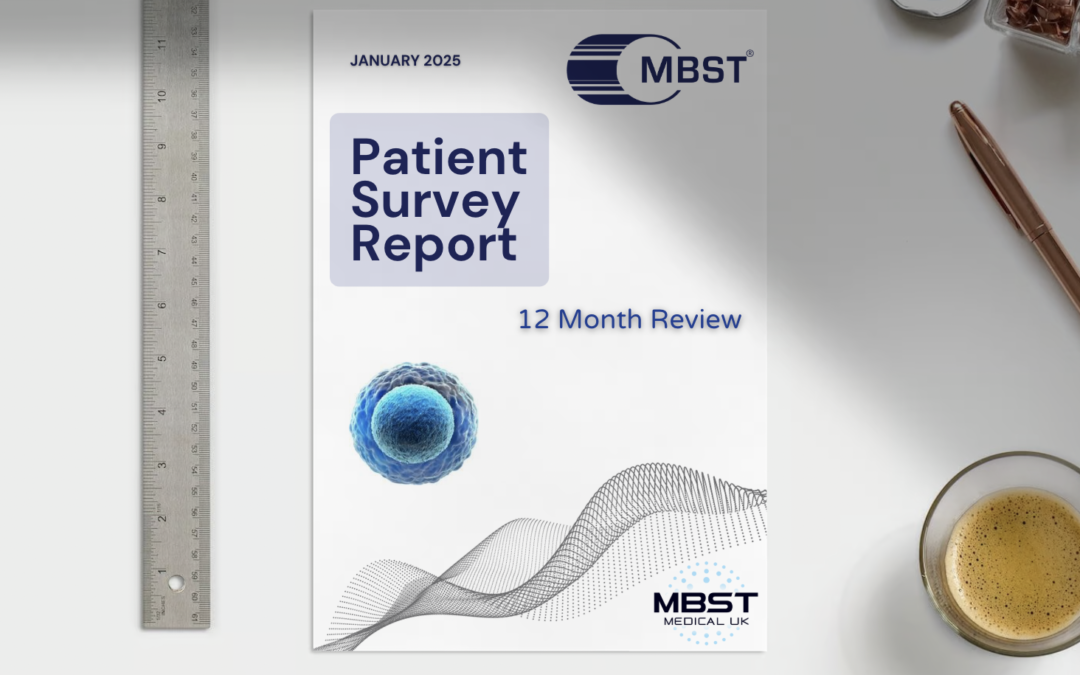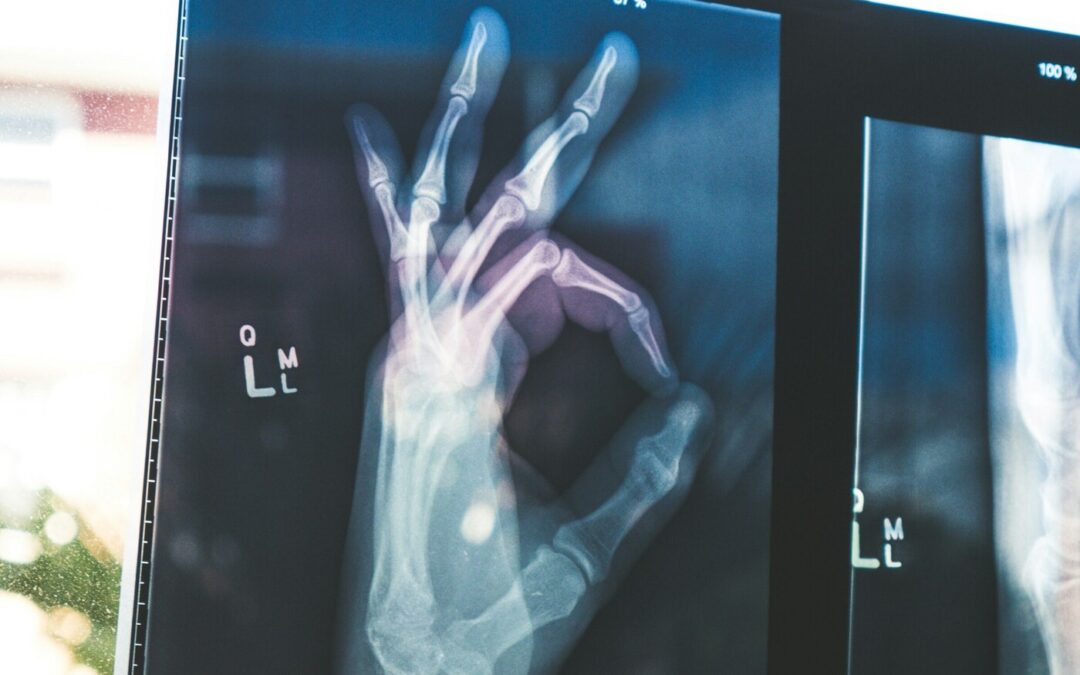Tennis elbow, known medically as lateral epicondylitis, is a painful condition caused by inflammation and small tears in the tendons that join the forearm muscles on the outside of the elbow. The pain occurs as the tendons become damaged from repetitive gripping and wrist movements, typically due to activities like repetitive grasping of tools or racquets, typing, and manual labour.
Some Key Takeaways:
- Tennis elbow (lateral epicondylitis) causes painful inflammation and tears in the elbow tendons from repetitive motions like grasping tools.
- Chronic tennis elbow pain can disrupt work and activities, requiring treatment beyond just rest to address underlying damage.
- Options like physical therapy, braces, injections, or surgery only provide temporary relief or carry risks.
- MBST treatment uses magnetic resonance therapy to stimulate accelerated healing of damaged tendons at the cellular level.
- After 5-10 painless MBST sessions, most patients experience a 50-70% reduction in pain and regain strength and mobility without long-term limitations.
- MBST triggers the production of ATP energy which powers faster tissue repair through increased blood flow and cell metabolism.
- New collagen fibers are generated, inflammation is reduced, and torn tendons heal through MBST’s stimulation of natural healing processes.
- With lasting pain relief and no side effects, MBST can help avoid invasive treatments and restore normal elbow function so patients resume activities they enjoy.
While minor cases of tennis elbow may heal over time with rest, chronic or severe pain often requires treatment to avoid lasting loss of strength or range of motion. The discomfort from tennis elbow can make even simple daily tasks difficult as the pain intensifies. Physical therapy, bracing, and steroid injections may provide temporary relief but do not address the underlying tendon damage.
MBST therapy is an innovative, non-invasive treatment option for long-term tennis elbow pain. Using magnetic resonance technology, MBST stimulates the body’s natural healing processes at a cellular level. By directing magnetic energy into damaged tendons, MBST triggers accelerated cell repair and new tissue growth. This results in a rapid reduction of pain and inflammation as well as restored mobility and strength.
With a high success rate and no side effects, MBST allows most patients to regain full activity and arm function after just 5 to 10 painless treatments. MBST therapy gets to the source of tennis elbow rather than just masking symptoms. It provides a safe, natural pain relief alternative that stimulates your body’s own restorative powers.
For those with lingering tennis elbow soreness that disrupts work, hobbies and daily life, MBST treatment offers a meaningful solution. By speeding your natural healing at the cellular level, MBST can end the cycle of pain and return you to the things you love doing.
Causes and Symptoms of Tennis Elbow:
Tennis elbow is caused by small tears in the tendons that attach the forearm muscles to the outside of the elbow, known as the lateral epicondyle. These tears occur from repetitive motions that strain the tendons such as frequent or forceful gripping, grasping, or wrist extension. While the condition is commonly associated with playing racquet sports, any repetitive activity such as carpentry, plumbing, painting, or even excessive keyboard use can lead to tennis elbow.
The hallmark symptom of tennis elbow is pain and soreness on the outside of the elbow that starts mildly but worsens over time. The pain may radiate down the arm towards the wrist. Gripping objects or extending the wrist becomes difficult and painful as the tendon damage intensifies. Even simple acts like lifting, twisting, and reaching can aggravate your symptoms. At its worst, tennis elbow can become disabling by significantly limiting your strength, mobility and endurance.
Other signs of tennis elbow include:
•Tenderness when feeling the tendons on the outside of the elbow
•Weakness in the affected arm
•Difficulty gripping with hand or grabbing objects due to pain
•Sharp elbow pain that occurs during specific movements (especially overhead)
•Minor swelling or warmth around the outside of the elbow joint
•In severe cases, pain that persists even at rest and restricts normal activity
The pain from tennis elbow typically starts gradually and builds over weeks or months. Though conservative remedies may help initially, chronic or recurring symptoms demand prompt treatment to avoid potential long-term joint and muscle damage or weakness. By stimulating healing in the affected tendons, MBST therapy can eliminate your tennis elbow pain at its source so normal function may be restored.
Common Treatment Options for Tennis Elbow:
For mild to moderate tennis elbow, the initial step is typically conservative self-care:
•Rest: Avoid activities that cause pain or strain to the elbow. Limit forceful or repetitive gripping/grasping motions.
•Ice: Apply ice to the painful area of the elbow for 15 to 20 minutes at a time, 3 or 4 times per day. This can help reduce inflammation.
•Compression: Wrap or brace the elbow can provide warmth and improve mobility.
•Physical therapy: Specific exercises can strengthen the tendons and increase range of motion. However, overusing the joint too soon may delay healing.
•Anti-inflammatory medication: Ibuprofen or naproxen may help with pain but do not treat the underlying tendon damage. Prolonged use of these drugs carries risks.
For persistent tennis elbow pain lasting over 3 to 6 months, other options may be tried based on severity:
•Steroid injections: Corticosteroids can reduce inflammation but may require multiple injections and do not always provide permanent relief. Risks like joint weakening or skin pigmentation changes are possible.
•Platelet-rich plasma (PRP) injections: Injecting a concentration of healing platelets from your own blood into the tendon. Somewhat controversial and typically not covered by insurance. Multiple treatments needed.
•Tenotomy: Surgical cutting of part of the tendon to relieve pain from excessive tension or pressure. Only recommended in chronic, severe cases unresponsive to other methods. Comes with risks like reduced strength or range of motion.
•Tennis elbow release procedure: Surgery to cut and reattach the tendon, freeing it from the surrounding inflamed tissue. Again, mainly recommended as a last resort for persistent and disabling chronic pain that is unresolved by alternative treatments.
While the options for tennis elbow range from simple to complex, MBST therapy is a safe choice that can provide lasting pain relief before more invasive measures become necessary. By stimulating cellular regeneration in the damaged tendons, MBST enhances your body’s natural healing processes so normal arm function may be restored to avoid prolonged treatment or loss of activity.
How MBST Therapy Works to Relieve Tennis Elbow:
MBST therapy utilises magnetic resonance technology to stimulate healing at the cellular level. Specific electromagnetic frequencies are directed into the tissues of the lateral epicondyle – targeting areas of damage or inflammation in the tendons that cause tennis elbow pain. These magnetic pulses excite the hydrogen protons within damaged cells, triggering the production of abundant adenosine triphosphate (ATP). ATP is the main energy source for cells and fuels accelerated repair and regeneration.
With increased ATP, the body is able to expedite the natural healing processes for reducing inflammation, repairing tendon damage, and rebuilding strength. MBST energises the cells in the affected area (at the speed of a magnetic pulse), which enhances blood circulation and speeds up cellular metabolism. Nutrients reach the damaged tendons more readily while waste products are removed efficiently. Healthy new collagen and tendon fibers are generated to restore tissue integrity and stability.
MBST therapy is non-invasive, requiring no needles or incisions. Patients simply remain still while the resonating magnetic fields are focused on the elbow. Treatments last 30 to 45 minutes and a typical course for tennis elbow is 5 to 10 sessions based on severity. The effects are both anti-inflammatory and regenerative. Most patients report a 50-70% improvement in pain within 3 to 5 sessions.
Key benefits of MBST therapy for tennis elbow include:
• Significant and lasting reduction of pain and inflammation.
•Accelerated healing of tendon damage and tears without scar formation.
•Improved strength and range of motion in the elbow.
•Avoided need for prolonged medication, physical therapy or surgery.
•Natural relief with no side effects – allowing normal activity to resume.
•Sustained results when coupled with a gradual increase of arm use and exercise.
MBST therapy restores strength and function by healing tendon damage at its source through natural processes. Patients are able to avoid more invasive treatment options and the limitations or risks those may carry. With the accelerated healing MBST provides at a cellular level and the opportunity to rebuild strength and flexibility, pain relief from tennis elbow can become permanent.
For those suffering from persistent tennis elbow pain, MBST therapy offers a safe and effective treatment solution. By stimulating the body’s natural healing processes at a cellular level, MBST enhances the restoration of tendon tissue and strength in the elbow joint. Patients report a rapid decrease in pain and inflammation, allowing normal function and activity to resume without limitations.
Rather than temporary or short-term fixes, MBST provides lasting relief by generating new collagen and cell growth in the affected area. Strength and flexibility are rebuilt as the tendons heal and stabilise. The risks of more invasive methods like medication, injection, or surgery can often be avoided through the regenerative effects of MBST therapy.
With 5 to 10 short, painless treatments, most patients regain full use of their arm and the ability to participate in the activities and hobbies they enjoy. The results of MBST are natural and sustainable, as long as gradual stress and progressive exercise are applied to the elbow following therapy.
For tennis elbow sufferers, chronic pain and weakness do not have to become permanent or require aggressive treatment with the healing technology of MBST. By restoring tissue at the cellular level, MBST gives patients their quality of life and independence back in a mere matter of weeks. Treatment is delivered without needles or downtime so people can continue with work or daily commitments as usual.
MBST therapy provides an opportunity to overcome tennis elbow discomfort through your body’s innate restorative powers. With a high success rate and no adverse effects, MBST yields remarkable and long-lasting recoveries by energising cells to renew and rebuild. Pain, limited mobility and the fear of losing strength or the ability to be active again can all be resolved through this innovative treatment that unlocks your body’s potential to heal itself. If tennis elbow pain is impacting your life, consider MBST as a natural solution to end your discomfort for good.

